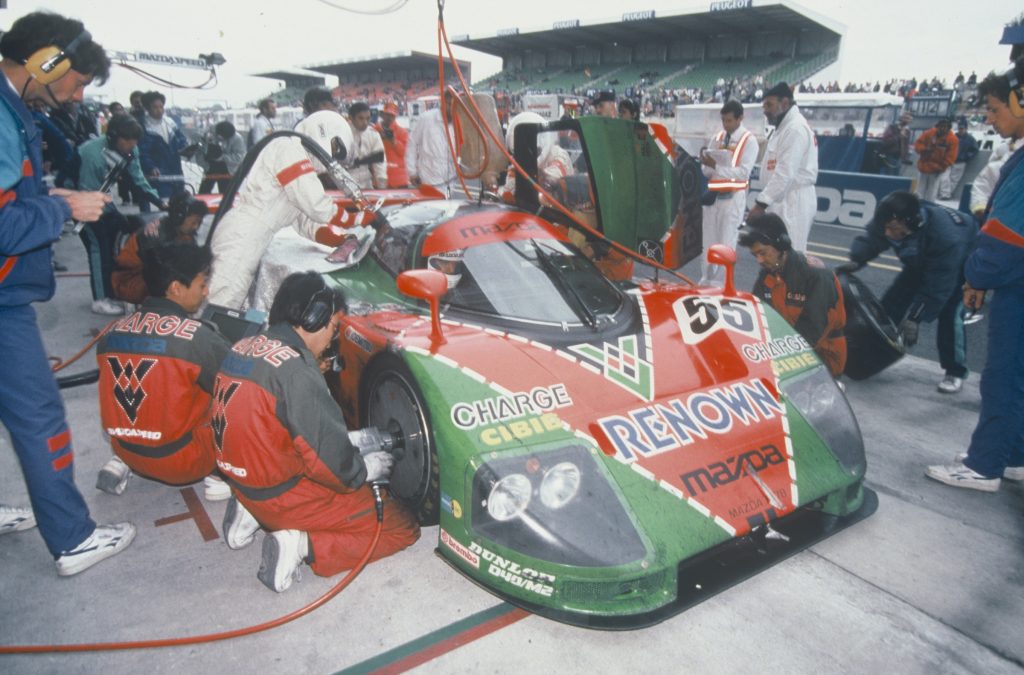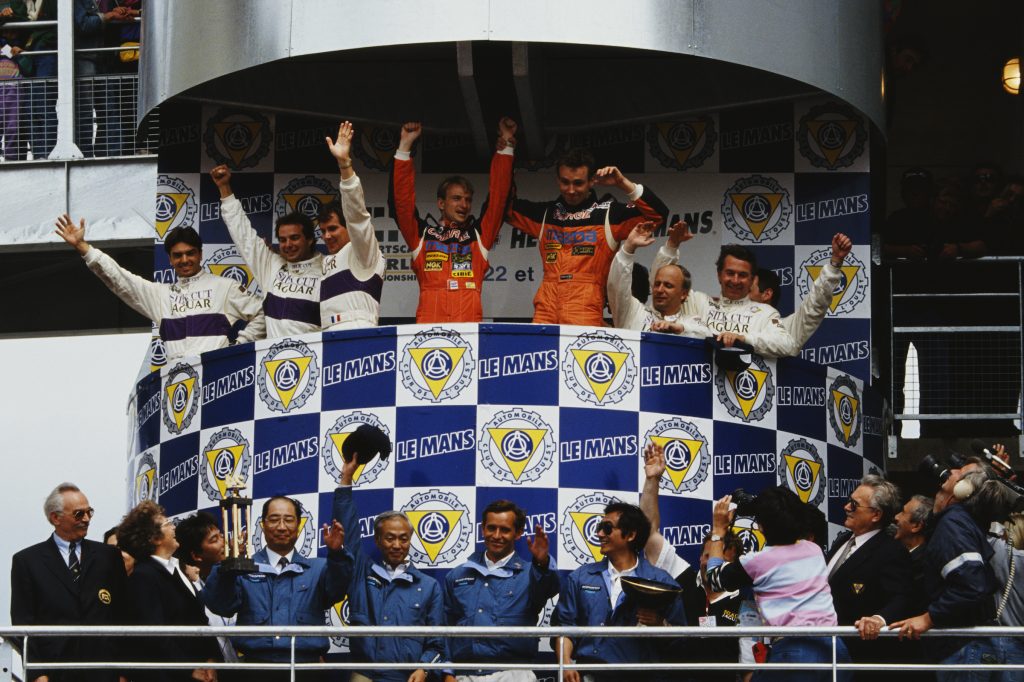Welcome to Freeze Frame, our look back at moments from this week in automotive history.
23 June 1991 – Mazda wins Le Mans 24 Hours
It is a source of amusement to fans of the rotary engine that when Mazda took victory at the 24 Heures du Mans on June 23, 1991, thirty years ago today, both the reliability and fuel economy of the 787B’s four-rotor 26B engine were instrumental in its success. Ask even the most ardent Mazda enthusiast which qualities define a rotary engine, and neither reliability nor fuel efficiency are likely to be high up the list.

They weren’t the only advantages Mazda had on its side, of course. As is often the case at Le Mans, there was an element of luck. Mazda had also been dealt a good hand with the regulations. The team’s naturally-aspirated rotary engine wasn’t subject to the same weight penalties of its piston-powered counterparts, allowing Mazda to run at a staggeringly light 830kg, nearly 200kg less than some rivals before ballast was applied.
Above all, Mazda had experience, and a determination to get the job done. While the rotary had already proven successful in other disciplines, with victories in everything from Japanese sports car racing to IMSA and the Spa 24 Hours, previous Group C entries made little splash. Rotaries saw some success in the junior Group C formula, C2, but the 757 and 767 that followed took class wins but no overall victories.

But Mazda was learning. The 787 sported an entirely new engine, the R26B, which utilised three spark plugs per chamber, variable intake runners, and the vulnerable apex seals – effectively the rotary engine’s equivalent of piston rings, ensuring the rotor maintains compression – were made from carbonfibre. Uncorked, the new motor was good for more than 900bhp at 10,500rpm, but in race trim, entrant Mazdaspeed limited the engine to 9000rpm, with an output of around 700bhp, for longevity. The whole lot was sent through, of all things, a Porsche gearbox, sourced from the 956.
Part of the car had winning pedigree then, but the 787 would still fall short of racing success. Despite drafting in Le Mans veteran Jacky Ickx to manage the cars and a driver lineup including names such as Stefan Johansson, Bertrand Gachot and Johnny Herbert, both 787 entries expired in the early morning hours of 1990’s event.
Things would be different for the Mazda 787B. The team developed the car further, improving fuel efficiency (in part by reducing the 26B’s rev limit further, resulting in around 650bhp at 8500rpm) and equipping the car with carbon-ceramic brake discs.
While racing with a beneficial weight allowance, Mazda’s cars were not favourites for the 1991 event – the first, incidentally, to be sullied by a pair of chicanes dividing the Mulsanne straight into three. The trio of Herbert, Gachot and Volker Weidler qualified the orange and green Renown-liveried car in 12th, only to be nudged back to 19th for the start of the race as the heavier 3.5-litre cars, running to the latest regulations, were awarded the first ten spots. Rivals Mercedes were similarly penalised, with their 5-litre turbocharged V8s.

Peugeot’s pair of spectacular 905s instead locked out the front row and set the early pace, but neither lasted beyond the four-hour mark. That put the race in the hands of Team Sauber-Mercedes, both quick and also more familiar with their 1000kg weights than their Group C rivals, but as the race progressed the Germans too suffered issues, slain by mechanical maladies until only two cars remained.
The number 55 Mazda, stopping less frequently than its rivals and able to push harder thanks to greater economy, had by now clawed its way into a position to pounce should the lead Mercedes of Jean-Louis Schlesser, Jochen Mass and Alain Ferté develop any problems. And develop they did: their C11’s alternator bracket sheared, taking out the water pump drive belt and toasting the car’s twin-turbo V8 on the drive back to the pits. The car first lost its four-lap lead, and after the Mazda had streamed past, was eventually withdrawn from the race.
Herbert had the honour of crossing the line for Mazda after a triple stint. The young Brit, whose enormous accident at Brands Hatch a couple of years prior was still fresh in everyone’s memories, collapsed from dehydration as he exited the car. Weidler and Gachot would hoist the winner’s trophy without him, but together they had made history: Mazda became the first Japanese brand to win at Le Mans, and the 787B remains the only rotary-engined car to do so.
Also read
Freeze Frame: Branson’s cross-channel car crossing
Our Classics: 1994 Mazda RX-7
Unforgettable moments from Le Mans








